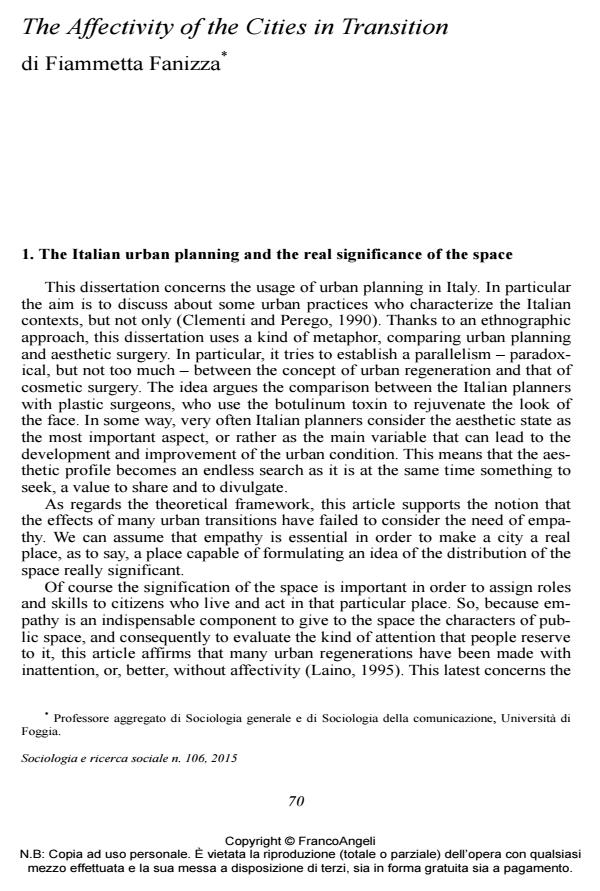The Affectivity of the Cities in Transition
Titolo Rivista SOCIOLOGIA E RICERCA SOCIALE
Autori/Curatori Fiammetta Fanizza
Anno di pubblicazione 2015 Fascicolo 2015/106
Lingua Italiano Numero pagine 10 P. 70-79 Dimensione file 48 KB
DOI 10.3280/SR2015-106004
Il DOI è il codice a barre della proprietà intellettuale: per saperne di più
clicca qui
Qui sotto puoi vedere in anteprima la prima pagina di questo articolo.
Se questo articolo ti interessa, lo puoi acquistare (e scaricare in formato pdf) seguendo le facili indicazioni per acquistare il download credit. Acquista Download Credits per scaricare questo Articolo in formato PDF

FrancoAngeli è membro della Publishers International Linking Association, Inc (PILA)associazione indipendente e non profit per facilitare (attraverso i servizi tecnologici implementati da CrossRef.org) l’accesso degli studiosi ai contenuti digitali nelle pubblicazioni professionali e scientifiche
During the last few years, several Italian city-planners have considered the concept of urban transition as something aprioristically able to produce new social practices. The aim of this article is to analyze the effects of transition in the metropolitan area of Bari (a large town in Southern Italy) where most of the recent public works have ignored the need for empathy. In particular they have not considered the way to capture the citizens’ imagination which is essential for distribution of affectivity into human relationships as those with public institutions. This thesis takes its cue from the results of recent studies regarding the negative effects on the affective tone produced by the botulinum toxin used in plastic surgery, and argues that public works are performed according to an aesthetic view that does not consider the value of beauty as sociability.
Fiammetta Fanizza, The Affectivity of the Cities in Transition in "SOCIOLOGIA E RICERCA SOCIALE " 106/2015, pp 70-79, DOI: 10.3280/SR2015-106004